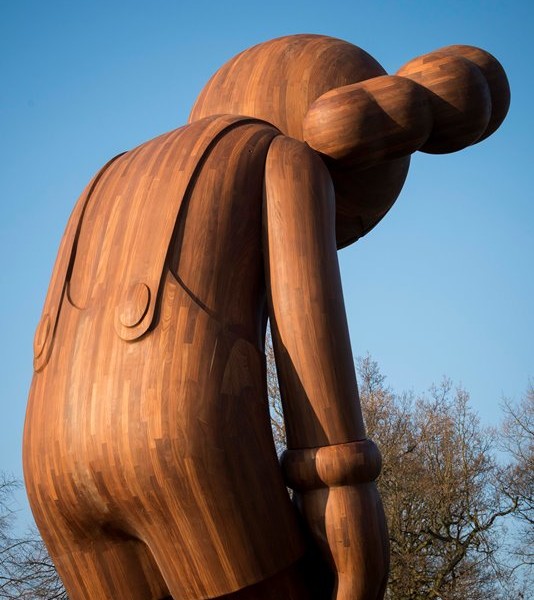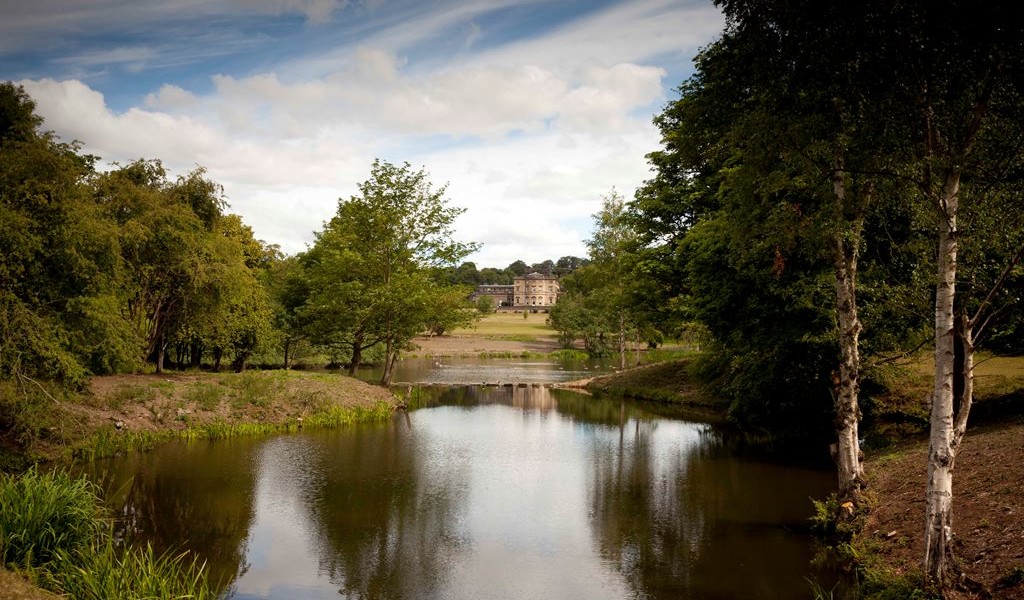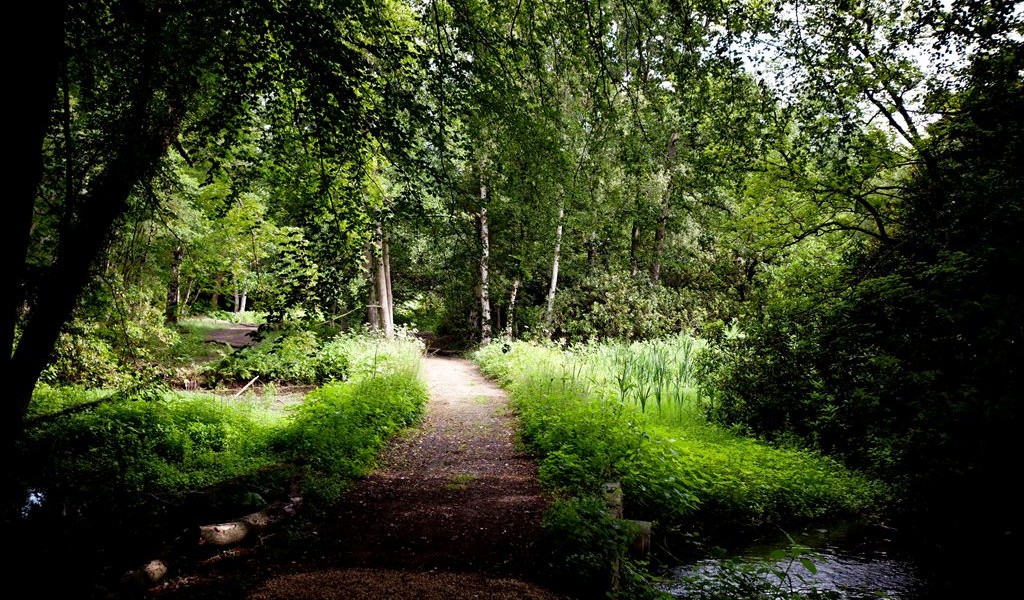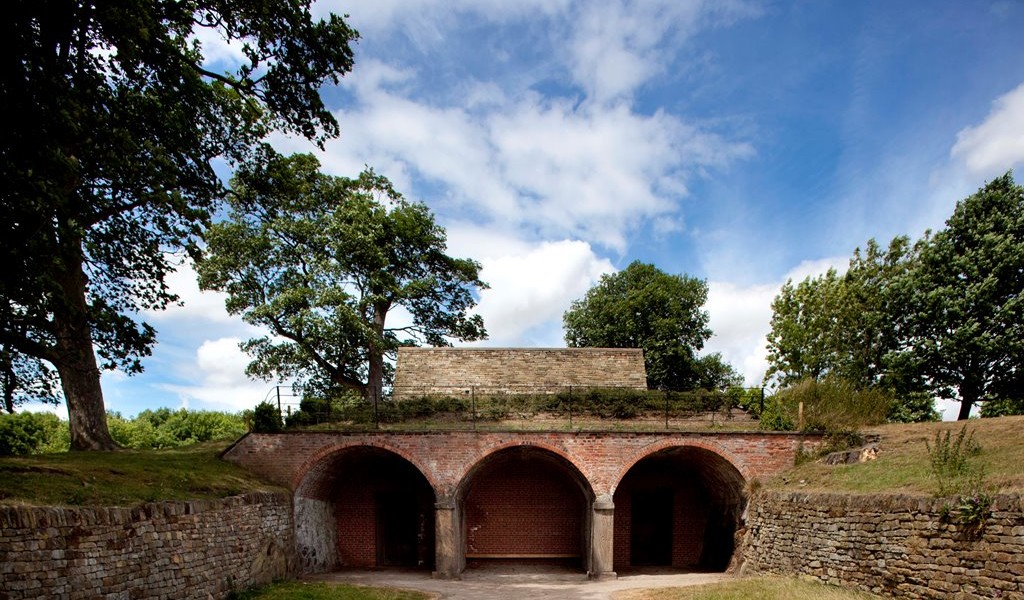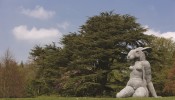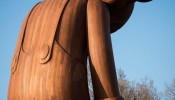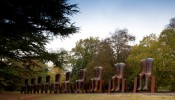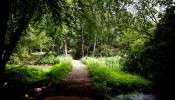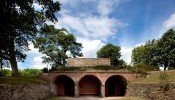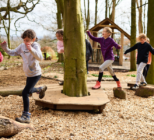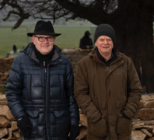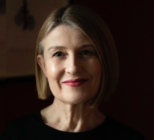Yorkshire Sculpture Park (YSP) is a pioneering outdoor cultural haven that aims to challenge, inspire, inform and delight its 400,000 annual visitors of which 48,000 are part of learning visits. Included in the landscape are formal gardens, lakes, woodland and rolling hills, which offer a variety of spaces with more than 80 sculptures displayed across the Park, some of which are sited in unusual places such as the top of a tree, in the middle of the lake and on the top of a gallery.
Numerous artists have responded to the YSP landscape to create performances and site-specific land art including James Turrell’s Deer Shelter Skyspace (2006), Andy Goldsworthy’s Hanging Trees (2007), Outclosure (2007) and Shadow Stone Fold (2007), and David Nash’s Seventy-One Steps (2010). Regular walks take place to observe the Park’s art, landscape, wildlife and historic features; and the grounds offer the best possible setting for events such as open-air theatre, family sculpture workshops, afternoon tea and yoga – such as the new monthly event series, Revitalise: Yoga Retreat, which runs on the last Sunday of the month from November 27.
“By encouraging sensory and emotional, as well as intellectual engagement with sculpture, our artistic programme has helped to break down the barriers that often exist between contemporary art and the public,” said Helen Pheby, Senior Curator at Yorkshire Sculpture Park. “At the same time, our pioneering learning and outreach programme has focused on giving children, young people and adults opportunities to engage with art through their own creativity, as well as more traditional learning methods. In fact, I first came to YSP on a school visit so I can personally vouch for the lasting impression and legacy of inspiration that the place has.” She says that YSP is also committed to working with practising artists to develop and deliver the programme, all fulfilling our overall mission to be an international centre for the creation, display and appreciation of art.
Founded in 1977 YSP’s founding principle was to make great art and landscape accessible to everyone; opening up what was once an aristocratic estate for all visitors to enjoy. Today the team continues to be committed to this idea, engaging a wide range of audiences including children and young people, those with limited experience of sculpture and the visual arts, and those often excluded from arts due to social, economic, and other inequalities – seeking to overcome the identified barrier of ‘inability to imagine beyond everyday experience’.
“Our learning and outreach programme works with more than 45,000 people each year; giving children, young people and adults opportunities to engage with art through their own creativity, as well as more traditional learning methods,” says Pheby. “As well as focusing on improving knowledge and skills, the programme also explores ways in which art can build confidence, self-esteem and well-being.
To aid the dissemination of knowledge the interpretation at the cultural attraction includes YSP WILD scheme with information panels throughout the park that highlight the different habitats found at YSP and the variety of animals, birds, insects and plants found within them. A free WILD family leaflet with a spotters’ guide and activities is also available to visitors and all works in the open air have an accompanying interpretation panel, which includes information about the artist and the sculpture. There are also map boards situated throughout the landscape to help visitors with navigation around the park, along with a printed map leaflet.
The maintenance of the grounds and sculptures is managed by a dedicated estates team and a team of volunteers who are tasked with the development and preservation of the 18th-century estate, from lawn-mowing to camellia pruning and the maintenance of historic features and follies to laying turf around newly sited sculptures.
“Our Sculpture Technicians condition check all sculptures on arrival and departure and the Visitor Experience team perform sculpture checks and light cleaning on a daily basis, supplemented with regular in-depth cleans,” she says. “YSP is a rare combination of sculpture and nature, which sometimes requires unusual problem solving, such as moving our Antony Gormley sculpture One and Other from one tree trunk to another when a woodpecker discovered an ‘all you can eat’ hornets’ nest in the first!”
The biggest challenge, however, is of course the weather, closely followed by wear and tear when managing the YSP landscape. Wet weather and heavy footfall are not always a great mix for the lush grass and the ground around busy walkways and popular sculptures can get very muddy and slippery, which is managed with woodchip, offering alternative routes and in some circumstances restricting access to certain areas. Maneuvering cranes and machinery over wet ground for the installation of large-scale sculptures, such as KAWS’ ten-metre-tall SMALL LIE, can be a bit tricky too as you can see from M+H Advisor’s feature from February where the team battled through snow and ice to put on the exhibition.
This dedication and commitment to make the park attractive and safe has a wider resonance when the health and well-being benefits to visitors are factored in. The unique combination of open green spaces and exceptional art makes YSP an ideal place to promote physical and emotional well-being. “In addition to the more obvious health benefits of being outside and active, making the outdoors more accessible can have significant therapeutic value and help to improve people’s self-esteem and mood, which will be formally assessed through a joint PhD with the University of Huddersfield. Activities within the Park can also help with tackling issues of social isolation; encourage self-expression through practical art activities; and offer the opportunity for individuals to learn a new skill.”
That is why the sculpture park’s ongoing aim is to make art and landscape accessible to the whole community, and to offer opportunities for people to engage with sculpture in a creative and meaningful way. “We see art as just one way to understand and appreciate the amazing world and universe we call home, and are crazy about sharing this with as many people as possible.”
In Focus - Interpreting the Outdoors
This article is part of an In Focus feature on Interpreting the Outdoors with more case studies.



